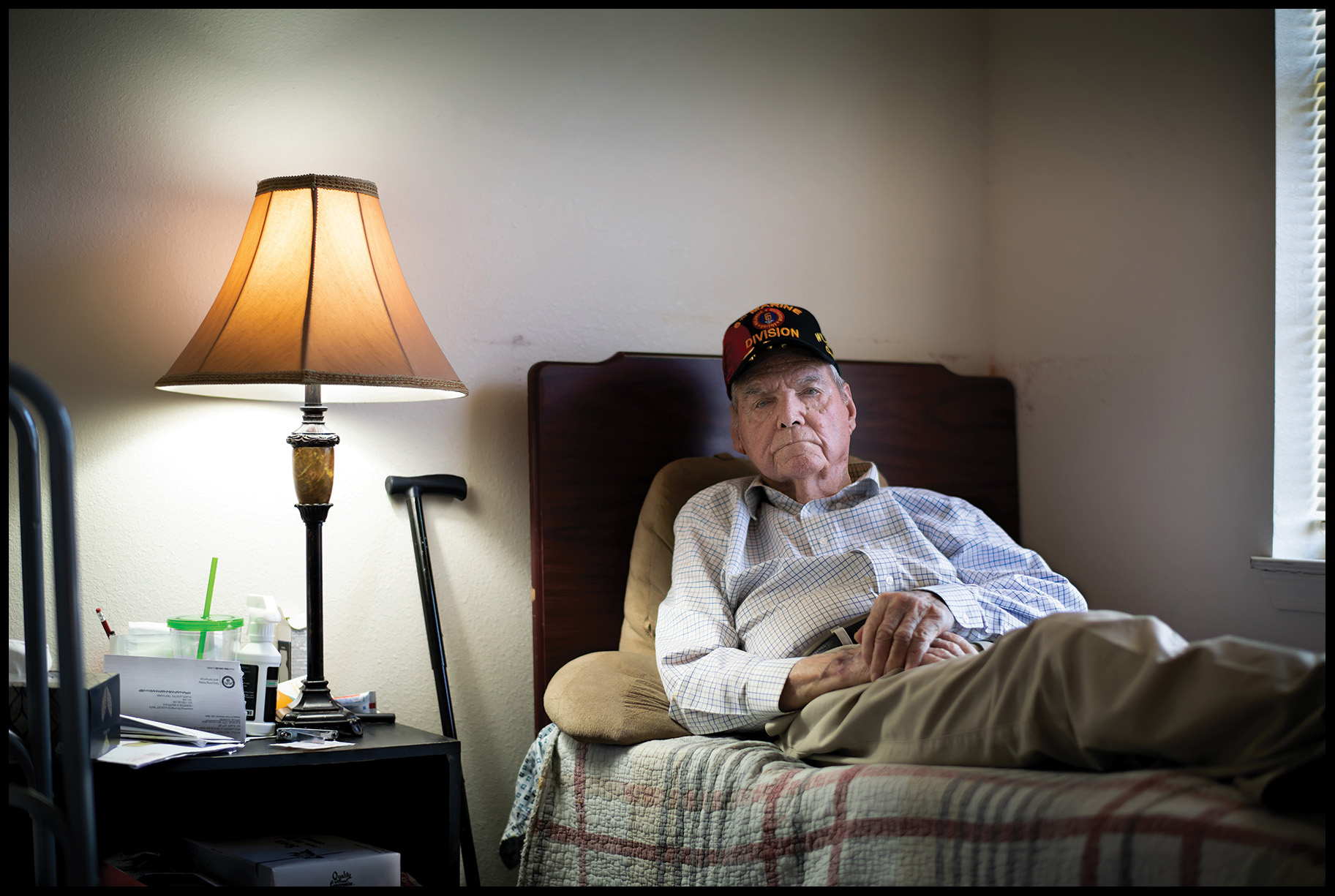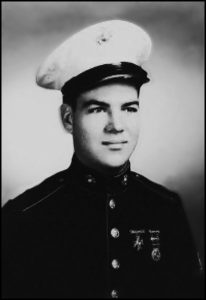
Chester Brittain
Okinawa veteran
Chester Brittain
Sergeant, USMC
1944-1946

Pvt. Chester Brittain
Norman, OK, 1943
I didn’t want to stand in line so I joined the Marines. After going to boot camp for a little while, I got to understand why there wasn’t a line.
I was born in Taft, Texas in 1925 and grew up on a cotton farm. My dad farmed 1,200 acres of cotton with mules. I looked many a mule in the rear end. We got our first tractors in 1936. I graduated from Taft High School in 1943 and was drafted in September. I went to the recruiting station at Fort Sam Houston and they had three desks—one for Army, Navy and Marines. The Army had a real long line. The Navy had a pretty good line, and the Marines didn’t have anybody. I didn’t want to stand in line so I joined the Marines. After going to boot camp for a little while, I got to understand why there wasn’t a line.
Then I went out to Miramar Camp, California where we had indoctrination and maybe a choice of what part of the Marines you wanted to be in. I applied for the Air Corps. I was sent to the ordnance division of the air corps. I went to a Corsair F4U fighter squadron to arm airplanes with bombs, then transferred to an SBD dive bombing school. We took a troop ship to the Marshall Islands in 1944 and went through more extensive training for arming machine guns, charging torpedoes and arming the F4U Hellcat and F6F Wildcat. My job was to arm 20mm cannons in the wings.
They formed a convoy of over 400 transport ships. I was on an LST for 31 days and landed on Okinawa for the invasion on April Fool’s Day/Easter, 1945. Our crew maintained Yontan Airfield while the Marines took the north part of Okinawa and the Army took the south. All the resistance was in the south and the Army had problems. We replaced the Army in the south about a month after we landed. I stayed at Yontan Airfield to arm the aircraft that came off the carriers. We liked to see the aircraft planes come in, because the pilots would bring us chocolate candy.
In June, a Japanese Betty bomber came in under the radar about dark. It belly-landed, and eight Japs got out. They went down the runway with hand grenades with suction cups and stuck them up on the wings of the aircraft and blew them up. They had special charges they put into the ammunition and gasoline dumps and set fire to everything. During that battle, I received several shrapnel wounds and was awarded the Purple Heart. After Okinawa, we trained for the invasion of Japan. When the war was over in August, I was transferred to Yokosuka Naval Base on occupational duty. I applied for towed target duty. We had TBF airplanes and we pulled targets for the British and American fleets. I was promoted to sergeant in Japan and stayed there until April, 1946.
I was discharged in San Diego then came back to Taft. My dad had bought a ranch and I went to work for him. I got where I could rope calves pretty good. Our weekend entertainment was jackpot calf roping. My skills increased and I joined the Professional Rodeo Association and roped professionally for 13 years. I was selected to go to Australia to represent the U.S. as a calf roper and bulldogger. Their record for bulldogging was 17 seconds. I did it in 11 seconds. I threw the fastest steer that had ever been thrown in Australia. I came back on the ranch and that’s basically been my life. I was on the ranch from 1946 until 2014. I was a quarter horse judge for 20 years and a judge of cutting horses. That was after I got too old and too slow to rope. I raised colts and trained them myself. I got to make a living for what I loved to do.
My first wife worked at a saddle shop in Beeville. She was a farm girl and liked rodeo and horses, so we made a good connection. She died of leukemia when she was 37. {01-23-2020 • Portland, TX}